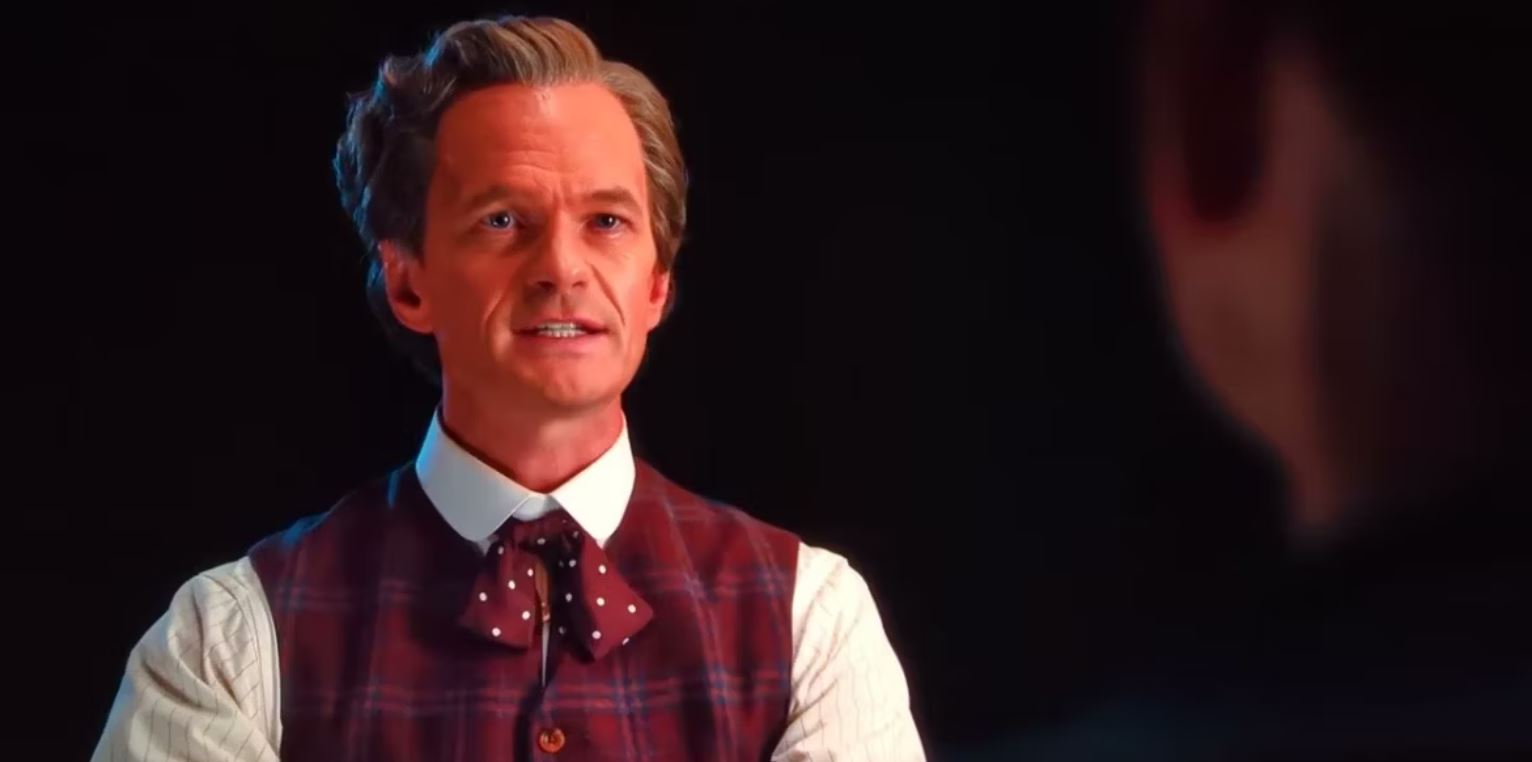The fourth episode of Doctor Who Season 1, “73 Yards,” threw Millie Gibson’s Ruby Sunday into her own spine-chilling adventure, featuring an encounter with a terrifying new UK Prime Minister. The episode, penned by showrunner Russell T Davies, took Doctor Who into the realm of folk horror and put a suitably timey-wimey twist on the genre. After the previous episode, “Boom,” focused squarely on Ncuti Gatwa’s Fifteenth Doctor after he stepped on a landmine, “73 Yards” followed Ruby as she was left on her own after the Doctor once again stepped on something he shouldn’t have.
In his brief role at the start of the episode, however, the Doctor revealed just enough to set up an unsettling new villain. Doctor Who has featured sinister Prime Ministers before. Most notably, the Doctor’s archenemy the Master once assumed the office of Prime Minister while posing as Harold Saxon. In 2021, the New Year’s special “Revolution of the Daleks” introduced Prime Minister Jo Patterson, who had made an underhanded deal involving the Daleks to assist her rise to power. “73 Yards” marked the appearance of a new villainous Prime Minister on Doctor Who, Roger ap Gwilliam, an all-too-plausible reactionary leader, who might also have been hiding a dark secret.
Ruby Sunday Meets Roger ap Gwilliam in ’73 Yards’

Roger ap Gwilliam, played by Aneurin Barnard, didn’t appear until over halfway through “73 Yards,” but the character’s name was mentioned early on. The episode opened with the Doctor and Ruby stepping out of the TARDIS on a Welsh clifftop. Here, the Doctor professed his love for Wales, while Ruby recalled her previous visits. The Doctor then interjected with what he considered a “bad example of the Welsh,” Roger ap Gwilliam. He referred to Gwilliam as “the most dangerous Prime Minister in history,” mentioning a nuclear disaster he almost caused, before realizing Gwilliam’s premiership was just 22 years in Ruby’s future. The Doctor refused to say more to spare her the spoilers.
Gwilliam’s name was quickly forgotten when the Doctor then stepped on a fairy circle — a structure of cotton, charms and trinkets. Crestfallen, the Doctor inspected the damage he had done, while Ruby read two scrolls that had been left in the circle. One simply read “I miss you,” while the other said “Rest in peace, Mad Jack.” As she read the scrolls, the Doctor suddenly vanished, erased by the fairy circle’s power. When Ruby visited a nearby pub, the locals teased her for her believing the fairy circle might have any actual power, but also suggested that it may have bound Mad Jack’s soul to rest in peace until Ruby read the scrolls and broke the spell.
With the Doctor gone, Ruby wound up taking the train home to London. Initially, the only oddity in her new life without the Doctor was the presence of the Woman. This anonymous figure was always present, watching Ruby ever since she broke the fairy circle and always exactly 73 yards away. Anyone else who approached and spoke to the Woman immediately ran away in fear and abandoned Ruby. This led to a lonely existence for Ruby, which continued without the Doctor for years. Eventually, 2046 arrived and Ruby saw Roger ap Gwilliam on TV, preparing to run in the UK’s next general election and mentioning his childhood nickname: Mad Jack. Ruby suddenly realized she could save the world from the Prime Minister the Doctor had warned her about years earlier.
In order to get close to Roger ap Gwilliam, Ruby joined his campaign team. During television appearances, Gwilliam spoke of his plans to build up Britain’s nuclear arsenal, betraying an active desire to fire a nuclear weapon. Following his election as Prime Minister, Ruby was present as Gwilliam prepared for a speech in which he would announce the UK’s purchase of the nuclear weapons he had promised. Once the Doctor’s words of warning had been confirmed, Ruby positioned herself 73 yards from the stage where Gwilliam was standing, causing the Woman to appear beside him and strike terror into him as she had done others. Roger ap Gwilliam subsequently resigned and Ruby felt she had paid her penance for breaking the fairy circle.
Roger ap Gwilliam Might Have Been More Than a Politician

“73 Yards” was another big step into the realm of fantasy for Doctor Who. The sci-fi series has been steadily embracing more and more supernatural elements since the beginning of Russell T Davies’ second era as showrunner. Of all of Davies’ new Doctor Who stories so far, “73 Yards” is perhaps the most mystical, as little to no explanation was given for any of the episode’s strange happenings. Without the Doctor around and with UNIT driven away by the Woman’s power, there was nobody to explain to Ruby exactly what forces are at work. However, everything seemed to have been put in motion by the fairy circle on the clifftops, a location one pub patron described to Ruby as a “boundary” and a “liminal space … where rules are suspended” — words that might sound familiar to Doctor Who fans.
“Wild Blue Yonder,” the second of Doctor Who’s three 60th Anniversary specials, saw David Tennant’s Fourteenth Doctor and Catherine Tate’s Donna Noble on another such boundary at the very edge of the universe. The Doctor described this as a place “where the walls are thin, and all things are possible.” It was while the Doctor and Donna were at the edge of the universe that the borders of reality appeared to be broken. To ward off the Not-Things (creatures from outside the universe), the Doctor drew a line in salt and invoked the superstition that vampires and demons cannot cross a salt line without first counting all the grains. In “The Giggle,” it was implied that playing this “game” on the edge of creation was what allowed the Toymaker to enter the material universe and his legions soon followed.
The Toymaker was a godlike being, later confirmed to be part of a pantheon of gods. Other members included his child, Maestro, a god of music who was seen in “The Devil’s Chord.” The Goblins seen in the 2023 Doctor Who Christmas special, “The Church on Ruby Road,” were also said to be creatures from beyond this universe, seemingly following in the Toymaker’s wake. In “73 Yards,” the fairy circle on the clifftop is yet another superstition placed on a boundary between worlds. The circle had kept Mad Jack banished from the mortal world, but after it was broken, Roger ap Gwilliam later rose to power and confirmed he was once called Mad Jack. Perhaps, Gwilliam was another godlike being, banished from the universe by the fairy circle.
Of course, if Gwilliam was part of Doctor Who’s new pantheon of gods and subject to its superstitious rules, then the Doctor knowing about his premiership while the fairy circle was still in place might seem impossible. “73 Yards” implied that Mad Jack was banished from reality by the fairy circle and that breaking it created an alternate timeline in which he was let loose, until Ruby set things right. However, the timeline has been repeatedly altered on Doctor Who and, as a Time Lord, the Doctor appears able to remember events from all the divergent versions of history. Perhaps the Doctor was recalling the events of a timeline in which the fairy circle had never been constructed, when Mad Jack led the world to the brink of nuclear war as Roger ap Gwilliam.
Do Roger ap Gwilliam and Ruby Sunday Share Godly Origins on Doctor Who?

At the end of “73 Yards,” it was revealed that the Woman was Ruby Sunday all along. During her dying moments as an elderly woman in a nursing home, Ruby saw the Woman appear once more — not 73 yards away, but at the foot of her bed. As she reached out towards the Woman, Ruby became the Woman and was transported back along her own timeline. This allowed her to prevent the Doctor from ever stepping on the fairy circle, averting the creation of the timeline in which the Woman was present, and the Doctor was absent. The fact Ruby could alter her own history in this way might suggest she too possesses some level of godlike power. This might also explain how Gwilliam was defeated by her.
The Woman always spoke to those who approached her to drive them away, but what she said was never revealed. If Roger ap Gwilliam was a supernatural being, it would likely take more than an apparition of an elderly Ruby Sunday to ward him off. However, if Ruby was of a similarly powerful origin to him, then it’s possible that the older, time-traveling version of her may have been able to strike fear into Gwilliam’s heart. By this point in her timeline, the older Ruby was already aware of how events ultimately played out and was clear in her intention to undo the damage done to the fairy circle. Perhaps she shared with Gwilliam that she was going to reinstate the fairy circle’s power, banishing him from reality, leading to his resignation.
Ruby has previously defied the powers of godlike beings. When captured by Maestro in “The Devil’s Chord,” Ruby started to sing a song that had been buried deep within her since the day she was abandoned by her birth mother. This provoked a fearful response from Maestro, who tied the song to someone they called “the Oldest One” — possibly another name for the One Who Waits, who has been teased twice now. The first episode of Doctor Who Season 1, “Space Babies,” also saw the Doctor’s memory of Ruby’s birth mother changing, suggesting Ruby inadvertently changed the past when he brought it up. Perhaps the confrontation between Ruby Sunday and Roger ap Gwilliam in “73 Yards” was just one further tease of Ruby’s godly origins.
